The Development of the Flowform Kite
This is the story of the Flow FormŽ, a kite that was first developed almost 30 years ago by Steve Sutton, a Canadian parachutist who was interested in making aerodynamic improvements to early "wing" type parachutes.
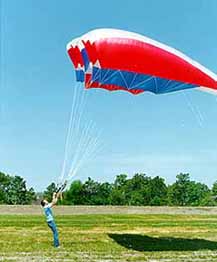
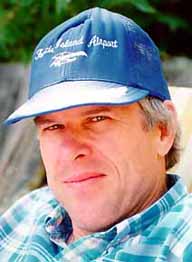
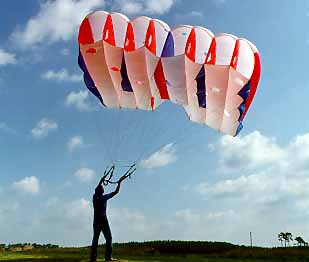
Steve Sutton and his parachute
Steve Sutton began his sport
parachuting career in 1965 at the age of 19. He was a member of
Canada's National Parachute Team from 1970 to 1972. He competed
in two World Championships, winning silver medal in men's
accuracy in 1972. Now living in Toronto, Canada, he is the owner
of a graphic arts and fine art publishing business. He is still
involved in aviation, and for the last fifteen years he and his
wife Kathy have flown ultralight airplanes on floats at their
cottage on Georgian Bay (one of the Great Lakes, north of
Toronto). They are currently building a new plane (a
Stoddart-Hamilton GlaStar) which they will fly in the homebuilt
category.
In the early 1970s, Sutton started modifying his parachutes to
improve their flight characteristics and stability. A few years
later, he used his aerodynamic concepts to develop a series of
kites of different sizes. Since then, the Flow FormŽ has become
a popular choice in the recreational kiting community.
Easy to launch in either light or heavy winds, the Flow FormŽ is
stable, reliable and light on the line. Flow Forms can be
identified in the sky by their deep cells, square shape, vents in
the top and bottom surfaces and large open area in the trailing
edge.
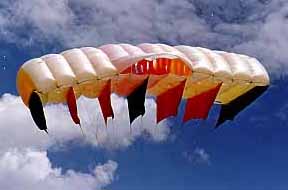
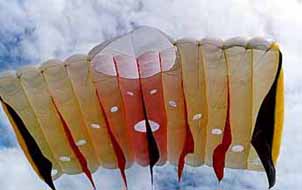
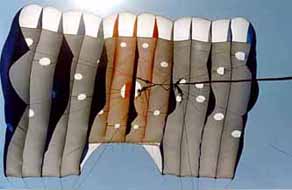
Several versions of his parachute
As Sutton developed and tested his
designs, his goals were to harness the abundance of high-pressure
air in a foil-type kite or parachute, and use it to create both
thrust and stability. The features he developed (and later
patented) included a series of vents in the top and bottom
surfaces of the wing, and a large vent in the trailing edge.
All Flow FormŽ kites have very deep profiles. These large cells
provide a stronger and more stable structure. Although one would
expect this to result in a huge amount of form drag, in fact,
drag is greatly reduced because of the large volume of air that
passes through the kite. This explains why the kite is so light
on the line, even in heavy winds. As well, the Flow FormŽ is
self-regulating, maintaining constant flight characteristics
despite changing wind conditions. This is because the kite adapts
to different amounts of air flowing through it.
Sutton's concepts had never before been used in the field of
aerodynamics. The original airfoil-type parachute design by
Domina Jalbert, and later developments by others, were all
limited to using the air entering the front of the cells to
maintain inflation (hence the name "ram-air"). Sutton's
concepts were new in that they allowed differing air pressures to
flow through the structure in a thrusting and stabilizing
fashion. The result was a kite with excellent flight
characteristics.
In 1984, Sutton granted a license to Air Affairs Inc. of Hatboro,
Pennsylvania as the exclusive manufacturer and distributor of the
Flow FormŽ. Since then, Helen and Jerry Murphy of Air Affairs
have developed a very successful business, marketing the Flow
FormŽ in a range of sizes from the "Exciting" 4 square
foot to the "Giant" 252 and the "Awesome"
450.
For more information, contact Air Affairs Inc., 107 Chelsea Road,
Hatboro, Pennsylvania 19040, U.S.A. (Tel. 215 672-1470).
Š1998 Thomas-Michael Rudolph